Hitler’s decision to fight until the last man and boy had been killed resulted in Hitler retreating from the Wolf’s Lair in Eastern Prussia and ensconcing himself in the so-called underground Fuhrerbunker near the Reich’s Chancellery in Berlin. Large swaths of Berlin had already been laid to ruin due to the continual bombing sorties by the British and American Air Forces. Now it was the turn of the Russian Army to complete its destruction.
Main picture: These photographs, taken by the Boston Globe, show the same location in 1945 and in 2015.
Cloistered within the fetid and otherworldly atmosphere were Adolf Hitler and his mistress Eva Braun together with the Goebbel’s family – Joseph, Magda and their six children. In spite of the German Wehrmacht being woefully inadequate to prevent the demise of Deutschland, Hitler and his closest aids still lived in a dream world. Accompanied by Albert Speer, Hitler even took a tour of the Reich’s Chancellery in order to view a model of the future Berlin; such was Hitler’s unwavering belief in Germany’s invincibility in spite of the deteriorating military situation.
All the Reich’s hare-brained schemes such as the establishment of the Volksturm which comprised of old men with less than a week’s training and the use of indoctrinated boys of the Hitlerjugend would never defeat the T34 tanks and the veritable flood of Russian infantry.

Hitlers farewell look at the model of the proposed future Berlin
It was then that President Roosevelt – FDR to many in America – died of a stroke on the 12th April 1945. On hearing the news, Joseph – ever the sycophant – dashed to break the revelation to Hitler that with Roosevelt dead, Germany would now win the war. Such was the level of disbelief, incomprehension and divorce from reality that these thoughts could even be entertained.
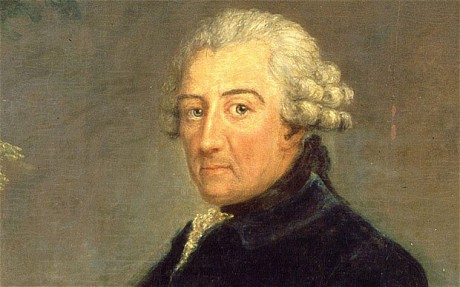
Frederick the Great – Hitler’s history hero
It was at this point that Hitler which break out into a soliloquy to raise his supporters flagging spirits – which he duly did. In this instance it was a tale about Frederick the Great, Hitler’s history hero, with which he would regale them. As always they had heard the tale for the umpteenth time which they were forced to endure in silence. In essence Frederick had managed to reverse his military (mis)fortunes in the nick of time. Even at this juncture, it was utterly inconceivable for Hitler that he could not prevent the destruction of his beloved Berlin as he never harboured doubts about his eventual victory.
To make matters worse, it was then that Hitler was to make one of his maudlin comments that as the German people themselves had betrayed him, they deserved to be destroyed. Hitler’s conflation of himself and the German people was still total. Fortunately none of the citizens of the Third Reich were aware of Hitler’s cynical view of their worth.
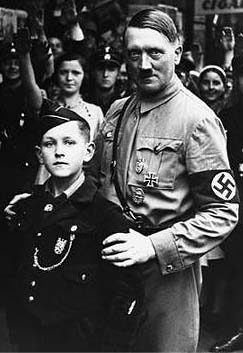
Hitler posing with a member of the Hitlerjugend
For one last time, Hitler ventured out of the safety of the Fuhrerbunker and ambled across to a line of youths in military uniform, his beloved Hitlerjugend. Withered with age and with one hand firmly planted on the other arm to prevent it from shaking, he stumbled across the courtyard. Hitler, the undisputed leader in all respects, now a shadow of his former self, pinned the Eisernes Kreuz – the Iron Cross – onto this dishevelled but proud bunch. In doing so, for one last time he reaffirmed that bond between Leader – Der Fuhrer– and his people which was soon to be rendered asunder. For the last time he raised their flagging spirits with tales of previous victorious actions and derring-do.
In the best of circumstances and the best gloss covering it, the military situation was untenable. Yet as if the German forces were actually able to fulfil the inane ludicrous instructions that flowed from the warped mind of Hitler, the flurry of messages flowed unendingly. In spite of his fragile health, Hitler was still able to cajole, threaten and re-invigorate his Commanders.

The Iron Cross
In April 1945, Eva Braun who was now 33 years old – Hitler was 56 – had first met Hitler at Hoffmann’s Studio in Munich in October 1929. Heinrich Hoffmann was the official photographer of the Nazi Party and Eva was in effect a lowly shop assistant together with her sister, Gretel. In her naivety, on being introduced to Adolf as Herr Wolff, she was none the wiser who was actually standing in front of her. Even at this meeting, there was to be a telling sign of their future relationship in that he treated her as a child during the encounter. Not only was Hitler a misogynist but his unscrupulous actions can confirm his misanthropic beliefs as well.
Alas, whatever was Eva’s attraction to Hitler will remain unknown for in company Hitler refrained from displaying any affection towards her but treated her in a rather offhand manner. Yet, despite this lack of affection, Eva remained at Hitler’s side over the years. Finally in 1945 when Hitler admonished her for not leaving Berlin before it was too late, she reiterated her desire to remain with Hitler until the end. The relationship, its nature and the attraction will forever remain enigmatic.
In his dilettantish way, Hitler arranged an extemporised wedding in the most unromantic and unflattering confines of the bunker. By now, the 29th April, the Russian forces had encircled Berlin and were steadfastly smashing their way towards the Chancellery. Maybe this wedding was an act of grudging respect by Hitler for her valiant decision to die at Hitler’s side. However one will never know.

Magda and Joseph Goebbels with Uncle Adolf
The following day after a frugal meal, both committed suicide; Eva with cyanide and Hitler by shooting himself. Forty hours after her macabre wedding, Eva was dead.
It was now time for the Goebbel’s to commit suicide. First they had to kill all six of their children:
- Helga Susanne – 12
- Hildegard Traudel – 11
- Helmut Christian – 9
- Hedwig Johanna – 8
- Holdine Kathrin – 7
- Heidrun Elisabeth -4
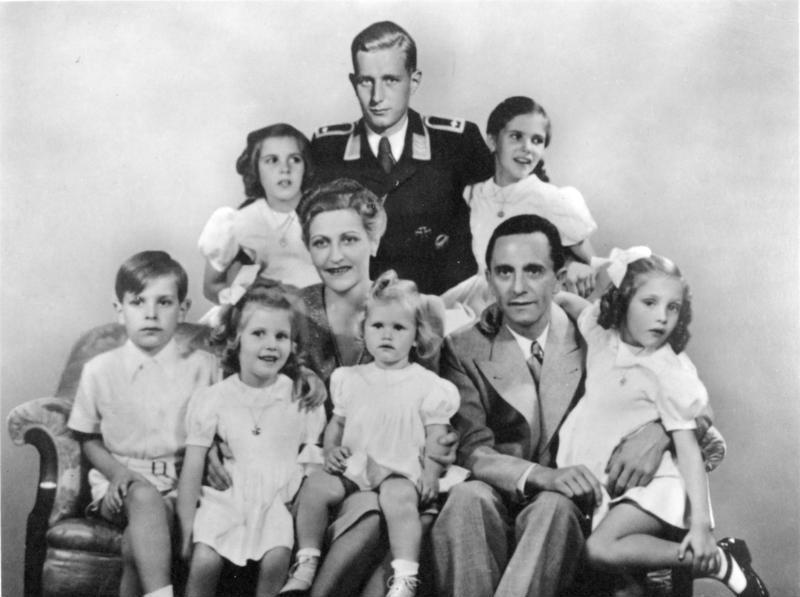
Joseph Gobbels with his six children. The eldest child in military uniform was Magda’s child from her previous marriage
Pictures of the children reveal them to represent proper Aryan traits with blond hair and cute smiles. For the Goebbels it was utterly inconceivable that any one of the family could remain alive once Germany had been defeated. A conscious decision had already been taken to kill all of their children. Once all six lay lifeless on their beds – killed by cyanide – their work complete, did Magda and Joseph too commit suicide.
A dastardly deed, a wanton act but such was the belief in their own propaganda that life without Uncle Adolf and the Nazi Party was inconceivable. To murder one’s own children with one’s hands epitomises the misanthropic nature not just of Hitler but his whole entourage.
The ultimate fate of Berlin lay in Hitler’s hands. His mind was fixed. Apart from feeling betrayed by the German volk, another factor weighed upon him: his fate at the hands of the Soviets if he was to be captured alive. Berlin’s fate was interrwined with that of Hitler’s.
The ramifications of Hitler’s decision never to surrender would result both in his suicide and in the total devastation of Berlin.
From the Boston Globe:
Berlin battleground- 70 years later: Some 70 years after the Battle for Berlin, instrumental in the ending of World War II, Reuters photographer Fabrizio Bensch unearthed pictures by Red Army photographer Georgiy Samsonov that depicted his portrayal of a city laid siege. Bensch bought an exactly equivalent FED camera, a Soviet copy of the German-made Leica II, and chose to use black and white film to capture images of the same locations he discovered in modern-day Berlin.

A Russian army vehicle next to the Neue Reichskanzlei (New Reich Chancellery), the Chancellery of Adolf Hitler at Voss Street
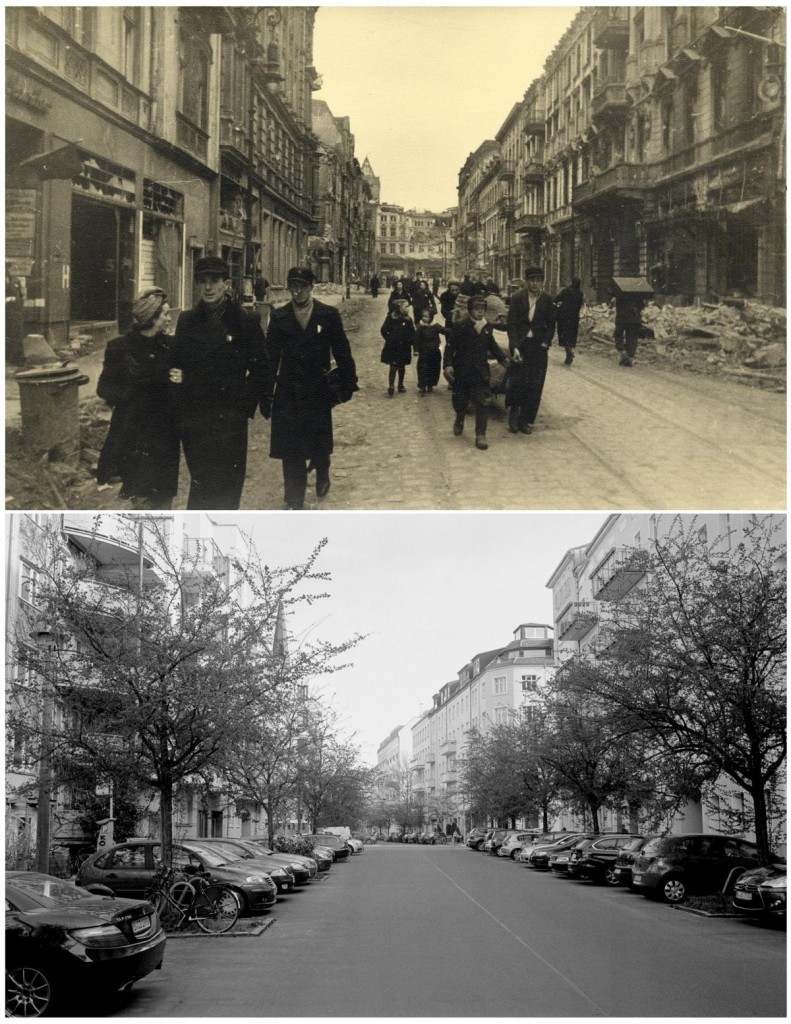
People walk on Borsig Street in this undated photo taken May 1945 in Berlin
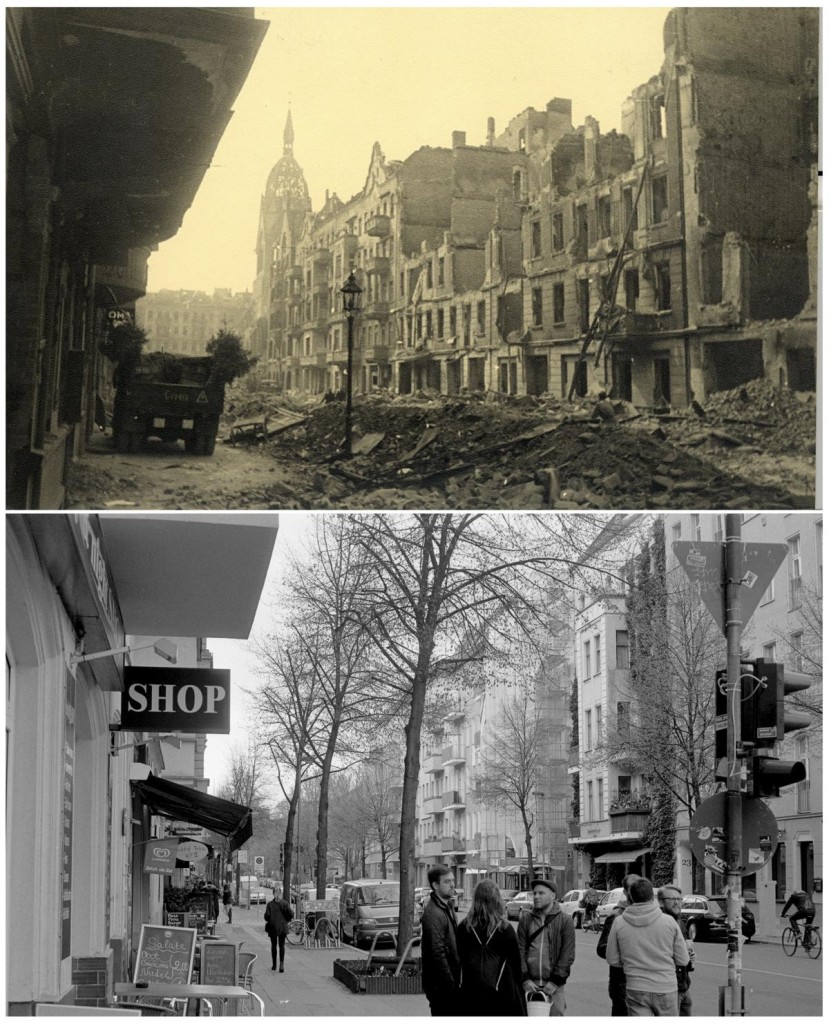
Russian army vehicle at Gruenberger Street in this undated photo taken May 1945 in Berlin

Russian soldiers in front of the Reichstag building in this undated photo taken May 1945 in Berlin

Russian soldiers next to a cannon at August Street in this undated photo

Russian soldiers on the side of the Reichstag building in this undated photo taken May 1945 in Berlin

Russian soldiers taking position in front of a burning building at Frankfurter Allee
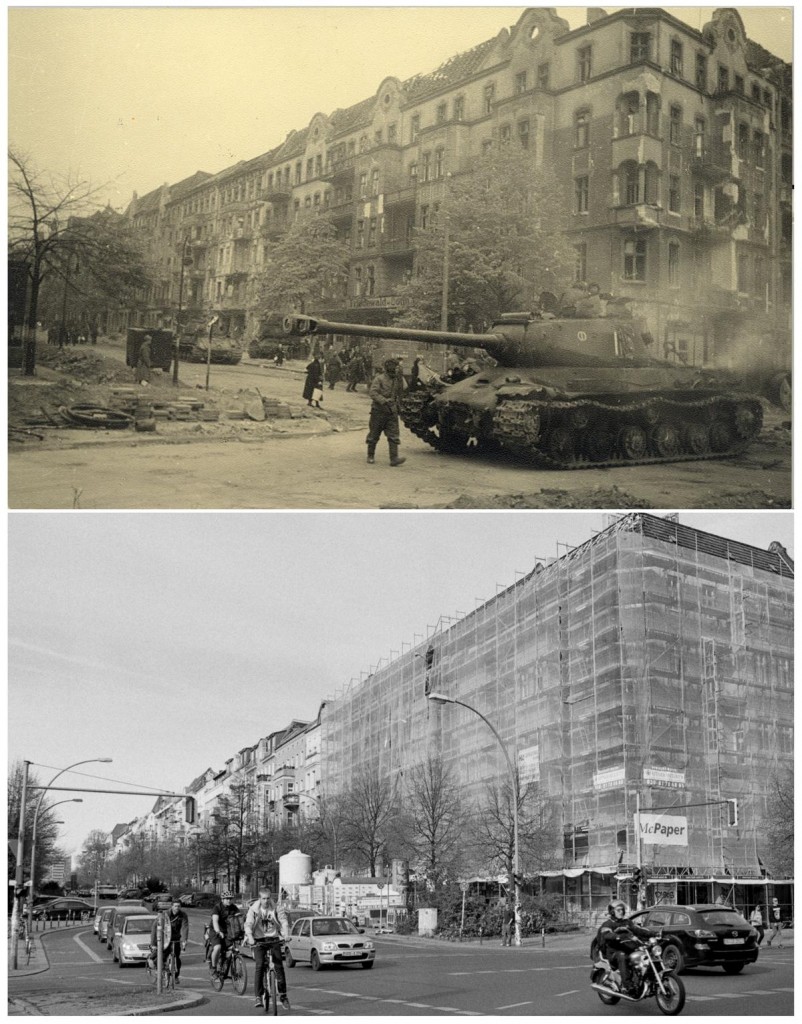
Russian tanks at Proskauer Street or Frankfurter Allee

Russians soldiers stand next to a sign at an entrance of the Neue Reichskanzlei, the Chancellery of Adolf Hitler at Voss Street



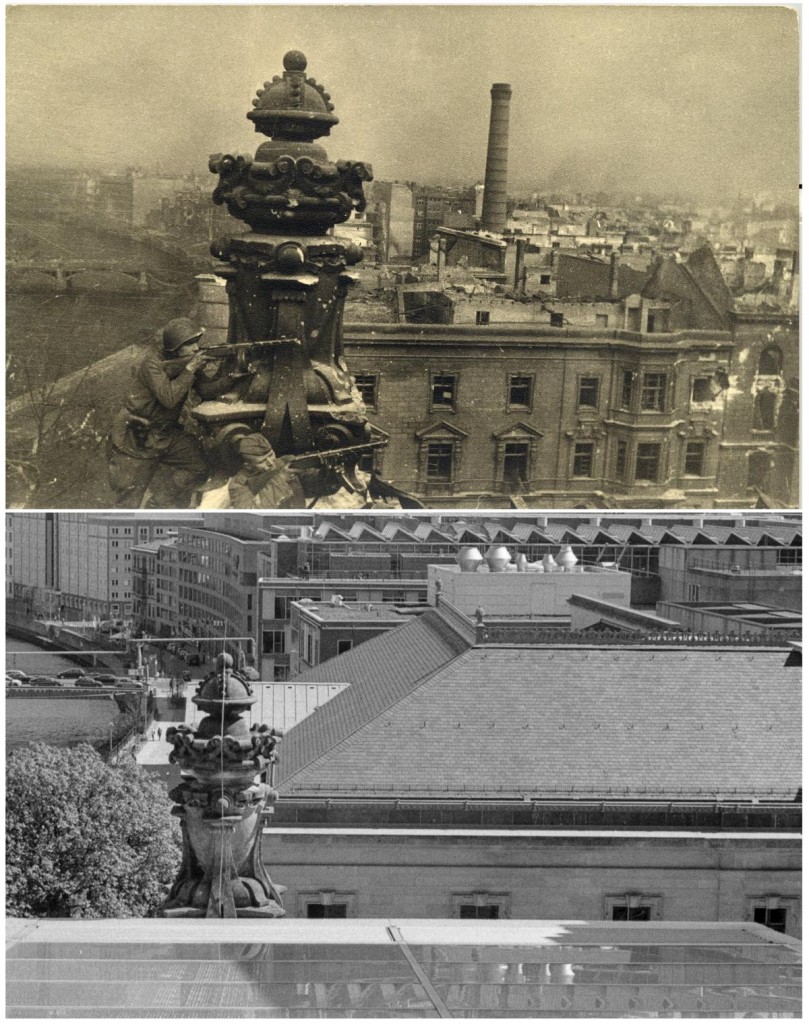
Awesome!
Am reading “the Good German” at the moment, which deals with immediate post-wwii Berlin, so of particular interest to me.
What is also pretty cool is the katyusha truck photo… I think its a Studebaker. But anyway, see the steel flaps above the windscreen – can be lowered to protect crew compartment from its own blast. And the 1 headlight isn’t because the other one got knocked off, but a design feature – to save costs many trucks only had 1 headlight. And I came here to read about the Gauteng marathon!